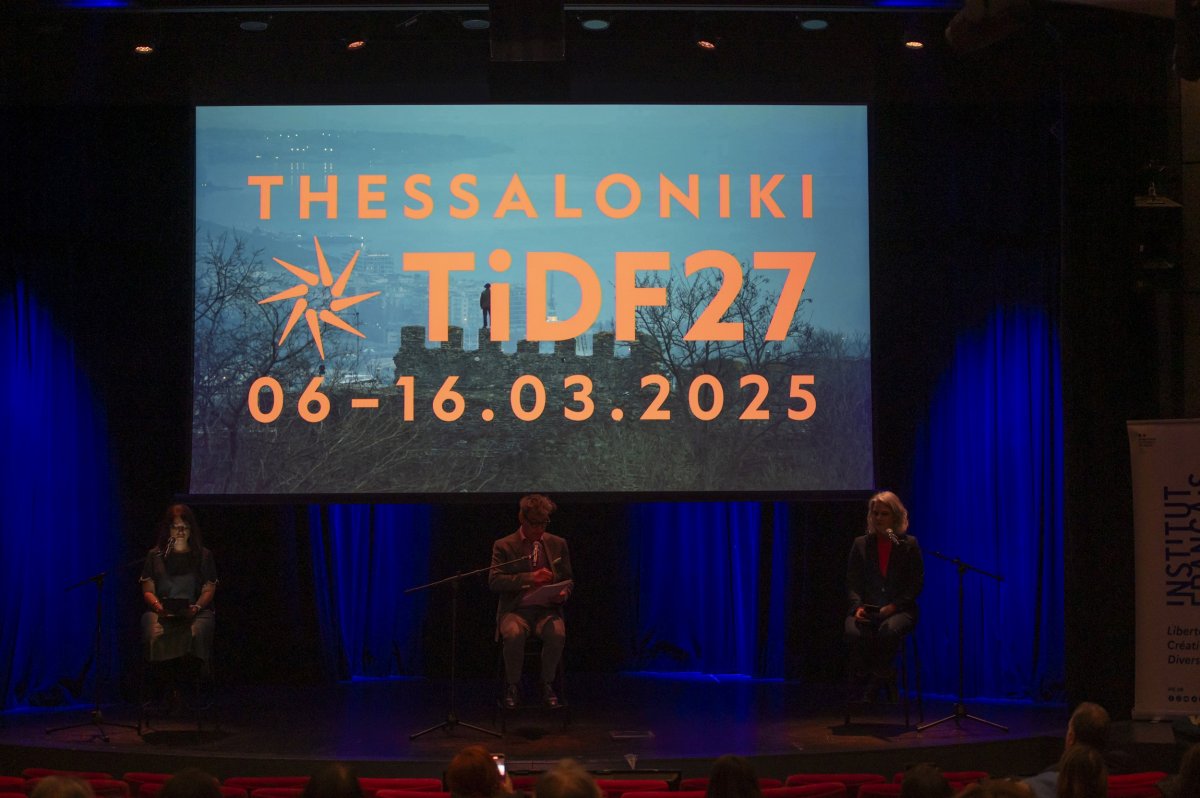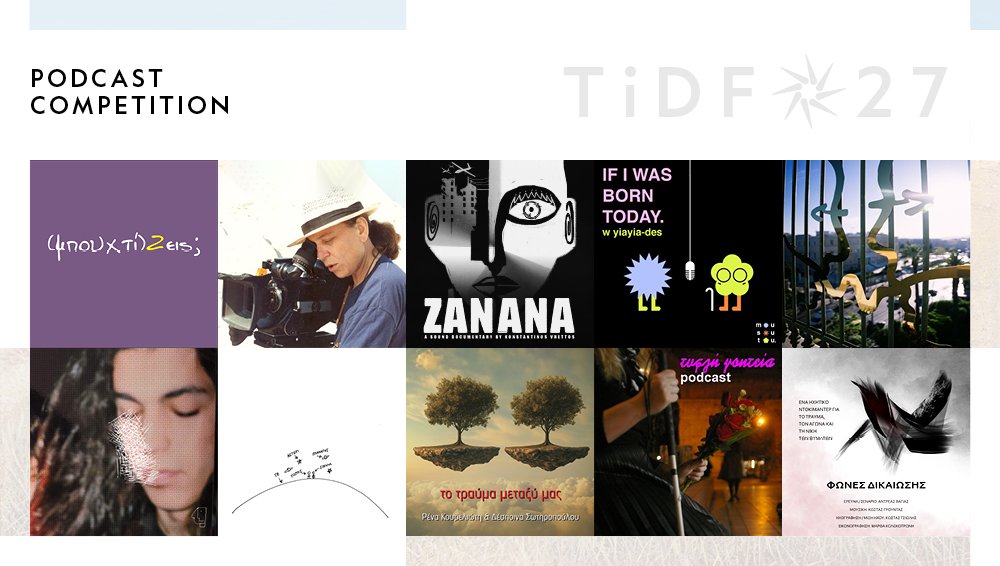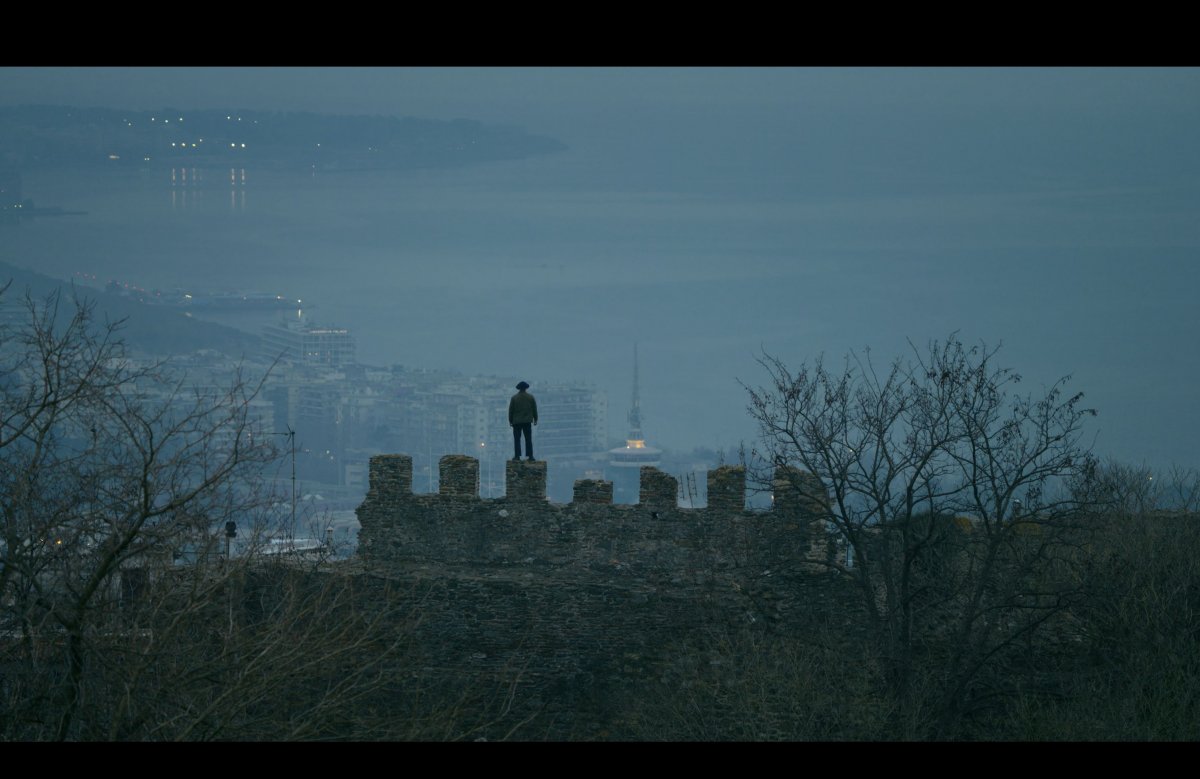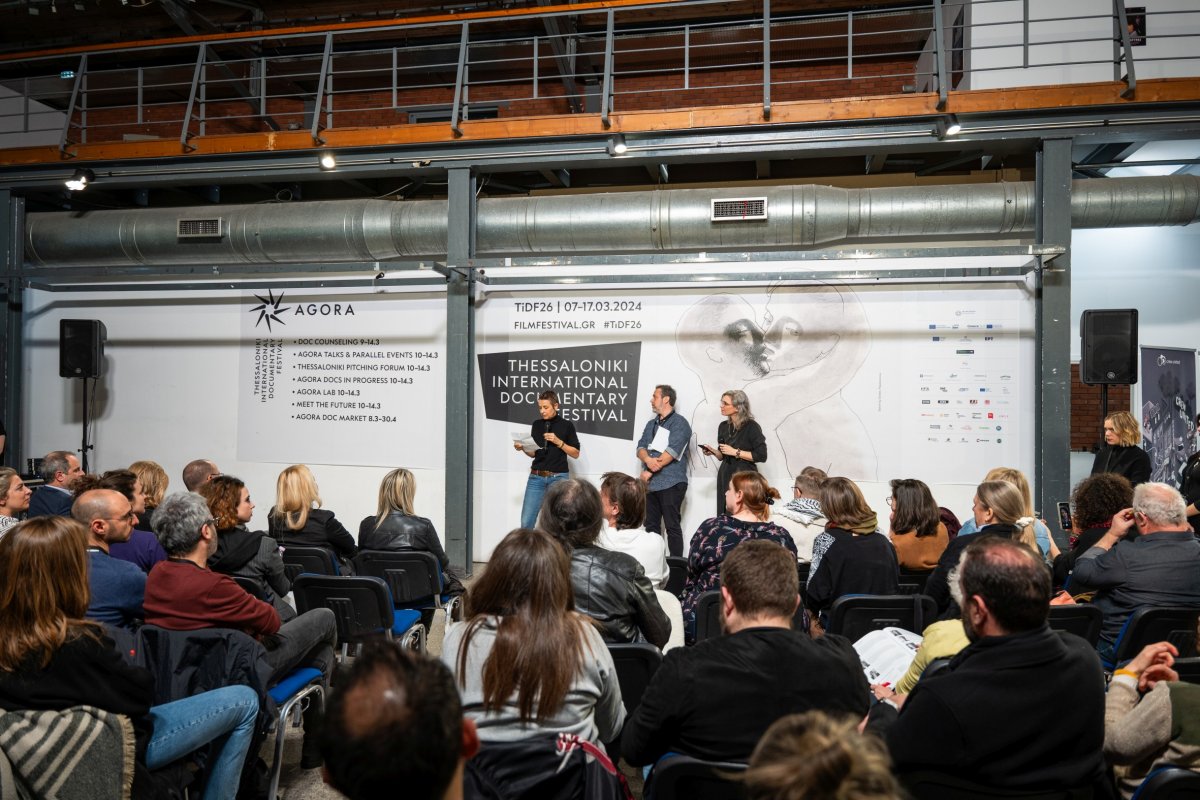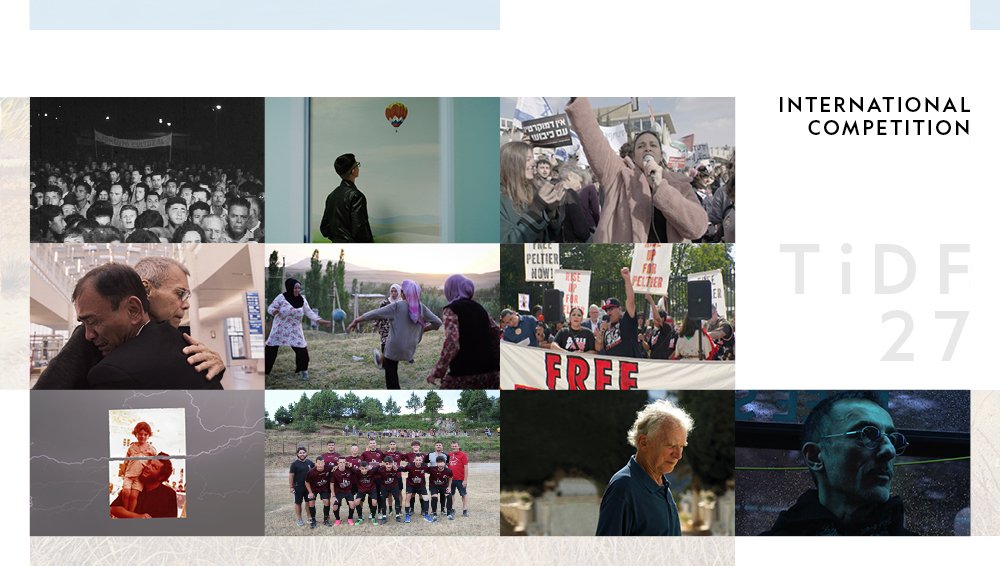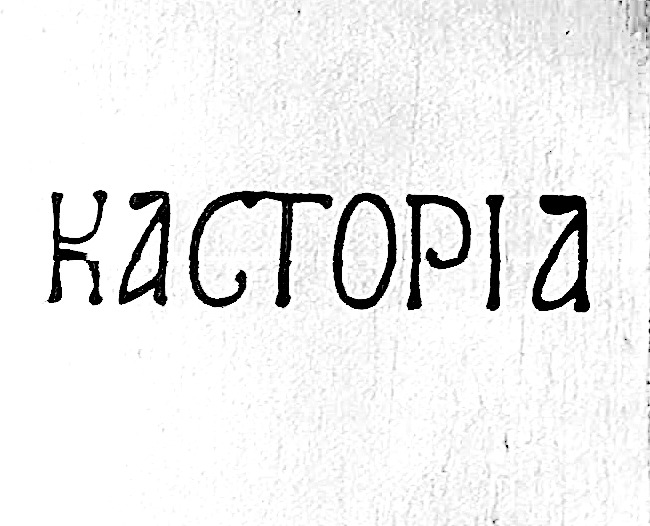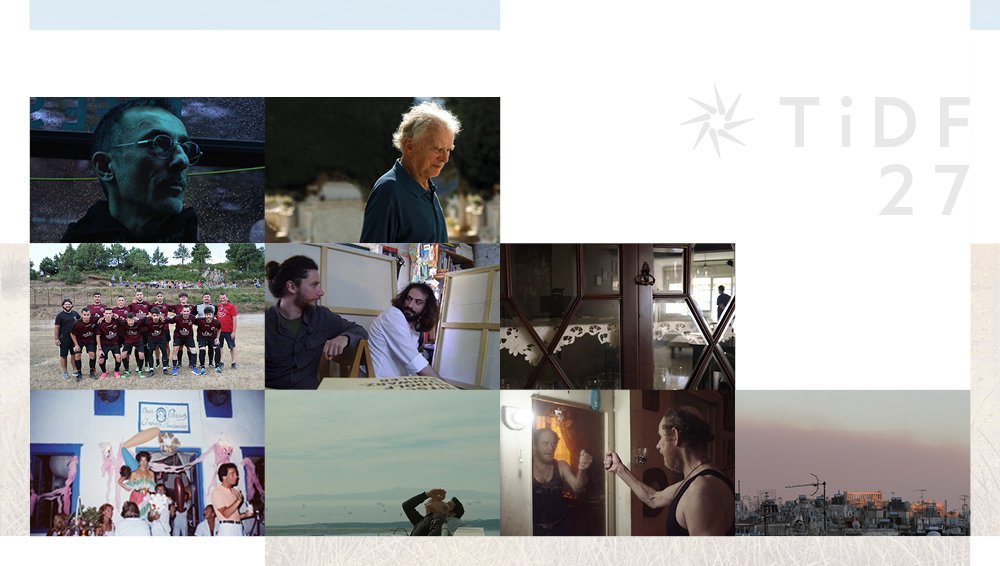Press Conference: Pirjo Honkasalo
On the occasion of the Spotlight on her work held within the framework of the 7th Thessaloniki Documentary Festival – Images of the 21st Century, the important Finnish creator Pirjo Honkasalo gave a press conference on Wednesday, April 6, 2005. Among other things, she spoke about the difference between fiction films and documentaries, the use of digital technology as opposed to conventional film, and the moral problems possibly facing the documentary maker. The director was welcomed by the Director of the Festival, Mr. Dimitri Eipides, who characteristically said that he has admired Ms Honkasalo for many years, and expressed the joy and honour he feels in knowing her, while noting: “ Ms Honkasalo is the guest of honour of this year’s organization, and it is a great honour to us that she is here with us at this Festival that takes place at the other end of Europe. On Thursday, April 7, Ms Honkasalo’s Master Class will take place at Apotheke 1 at the Harbour, a great and unique opportunity for all, as it is, in effect, a lesson in cinema.”
Pirjo Honkasalo took the floor from the coordinator of the Spotlight, Dimitris Kerkinos, and spoke abou how she began making documentaries instead of fiction films. “After 10 years of fiction films I began to feel that the world of fiction – the limited powers of the director, the business-like feel of the whole process - was in opposition to the way I wanted to live. So when I found myself making documentaries, I felt purified in a way, because I realized that the only things really necessary are a camera and a person, everything else is a luxury, they are not really needed. I didn’t need money, there were no schedules, and I re-discovered the joy that the exploration of life through a camera brings. And so I began making documentaries and regained the joy of film making, because I had started to feel burnt out. “
Asked about the differences between film making as opposed to making documentaries, Ms Honkasalo said: “I ended up making both kinds. For me, the balance given by working with both kinds, is important. However, I believe that the basic difference for the director is not really the subject of the film, because I believe that in documentaries, as in fiction films, you can work on everything. I do not agree with Kieslowski who stopped making documentaries because he believed that there were areas of life that the documentary should not try to explore. A large difference between the two kinds is that the documentary maker has to be very humble, he can not and must not demand anything of the world. In contrast, the director of a fiction film pays actors and gives orders”, she concluded laughing and added: “ Also, the fiction film director does not take on his shoulders the lives and problems of his actors, as opposed to the documentary film maker who carries the people from his film with him for the rest of his life, which is a difficult thing, even though it enriches the documentary maker”.
Moreover, she noted that “the biggest difference has to do with the fact that in a documentary you can explore inner life as well, not just outer life. It is however a strange genre, because they are very subjective films in which simple people are used as tools of expression.” However, she did not neglect to also add one more aspect: “ Finally, the differences between the two genres are not so great. In fiction, there is a documentation of the actor’s persona, in selecting actors the director also chooses characters and life journeys”. In answer to a question about the trilogy “The Sacred and the Satanic” she explained: “Originally, I didn’t want to make films at all, but the first film ‘Mysterion’ happened, and that led to ‘Tanjuska’. I don’t know though why when there are two, a third must follow. ”
Moreover, speaking about the leading character of the third film of the trilogy, «Atman», she noted that she ran into him and got to know him completely by accident. “I was at the foot of the Himalayas, and since it started to rain I went into a small coffee house where a Hindu family had also found refuge from the rain. Seeing my camera, they asked me to photograph them. Only when I saw him through the camera lens did I understand that he was my central character. I had a very hard time finding him again, but when I managed it, the coincidence was that his mother had just died, so according to the local traditions the son had to make a pilgrimage. In this way I found myself with a real pilgrim.”
Ms Honkasalo then went on to speak about her preference for conventional film as opposed to digital technology in film making. “At first I was completely against the use of digital technology, because I believed that it didn’t give the quality of reproduction that I desire. That is, a digital camera makes it very easy for the film maker to shoot endless hours, without carefully choosing his shots and the subjects he films, hoping that in the end all this abundant material will make up a movie. As opposed to this, I film in a very limited and specific way, I am very exact because I know what I want to present, when I see something through the camera I immediately know whether it belongs in the film or not. And I keep practicing in this direction, so that I can be disciplined and shoot only that which belongs in my film. Even if there is a murder committed next to me, if it doesn’t fit in my film I won’t shoot it” she said laughing, and added: “However I believe that if a digital camera is used correctly, it can give results that are very difficult to achieve with film. But I only used a digital camera in Grozsny, where it was not possible to use the usual equipment for survival reasons.”
To a question about the possible moral dilemmas a documentary maker might be faced with, Ms Honkasalo answered that there are such moments, but they are much rarer than one might think: “What happens with moral dilemmas and problems is that the documentary maker doesn’t know what he wants to give through his film, and he doesn’t know its subject. The moral dilemmas are the smoke screen behind which he hides in these circumstances” . She did however refer to the moral problem she faced with «Tanjuska», when she felt herself hiding behind the film: «So, while I do not use voice overs in my films, this is the first time I used it, and used myself at the same time so that my audience will know ‘who the guilty party is’».
Speaking about the film «3 Rooms of Melancholia», she noted that she is politicized and she does not deny it, while she added that even though politics are dirty, in the beginning it was all about being interested in people, who when united express their will and their interest in others. « This is what it means for someone to be politicized. However, this specific film is not a 60’s political film, I would call it instead a ‘politically political’ film. I believe that the problem with this kind of traditional political film is that the film maker believes that he is projecting himself outward. And this does not touch me anymore. But I believe that this film is not political, but provokes political thoughts in the audience, and has political results, at least that is what happened in Finland, many learned what was happening in Chechnia. In this sense it is and it isn’t a political film.»
On being asked about any advice she might have for new documentary film makers, Ms Honkasalo noted: “It is something very difficult. I really don’t know what to say. Because one does not learn documentary film making when one learns film making techniques. The documentary demands an understanding of life, and this can only be learned through life itself. It is difficult then to give advice to new documentary makers, because they themselves simply have to develop a deep understanding of life, that is, they must live life themselves.”




